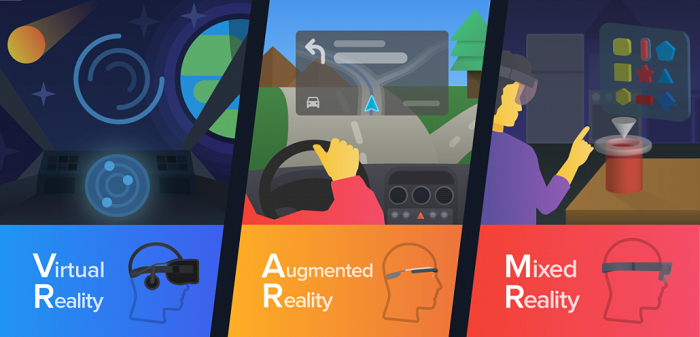XRDC released its third annual 2018 XRDC AR/VR Innovation Report. It is created from survey responses from over 650 professionals, who are involved in the development of AR, MR, and VR experiences. The research report offers insight into the rapidly growing and diverse industry including popular platform choices, sustainability, profitability, and funding.
Industry professionals are highly enthusiastic about the potential profitability of the market, and often self-fund their work as opposed to relying on third-parties. To explore this growth further, XRDC compiled its third annual AR/VR Innovation Report. Findings within the report are divided into multiple facets, each providing takeaways on current trends in AR, MR, and VR.
Platforms which are storming the industry
45 per cent of developers selected HTC Vive as their platform of choice, making it the most common platform targeted by developers for the third year running, albeit by the lowest percentage the platform has been selected since the inception of the VRDC Innovation Report in 2016. Oculus Rift remained the second most popular platform at 41 per cent, and Android phones and tablets using Google’s new ARCore toolset ousted Samsung’s Gear VR headset for third place this year, being selected by 30 per cent of developers.
When respondents were asked which platform their next project would be released on, Oculus Rift was selected the most at 41 per cent, followed by HTC Vive at 39 per cent, and Android devices using ARCore at 24 per cent. This confirms results from the 2017 Innovation Report, which revealed that HTC Vive was previously the most popular target for future projects at 52 per cent, followed closely by Oculus Rift at 50 per cent, and suggested that Rift was poised for a resurgence.

AR is rising above VR
With the rise of AR, the platforms being used under this technology are becoming increasingly more important. While 30 per cent of developers are using Android’s ARCore toolset, 24 per cent are making AR experiences for iOS devices using Apple’s new ARKit toolkit, and 17 per cent are targeting Windows Mixed Reality AR headsets such as Microsoft’s HoloLens. 8 per cent of respondents said they were making experiences for Magic Leap, which is more than double the three per cent of developers that selected the platform last year.
Will AR, MR, and VR last into the future?
When asked where their funding comes from, 45 per cent of survey respondents cited the company’s existing funds, followed by personal funds at 27 per cent and clients at 21 per cent. These results indicate that venture capital and angel investment in AR, MR, and VR development is at an all-time low among respondents – only 9 per cent selected this option in the survey. When compared to data from surveys in years past, there is a slow trend away from external investment and toward self-funding as industries mature.
95 per cent of survey respondents believe that AR, MR, and VR development is a long-term sustainable business. When asked if the development would turn a profit, 15 per cent commented it was already doing so, 12 per cent anticipated profit in the short-term, 38 per cent said medium-term, and 23 per cent said long-term. These results suggest that companies are finding AR, MR, and VR development to be a more sustainable business and can justify spending the funds on developing AR, MR, and VR headsets.
